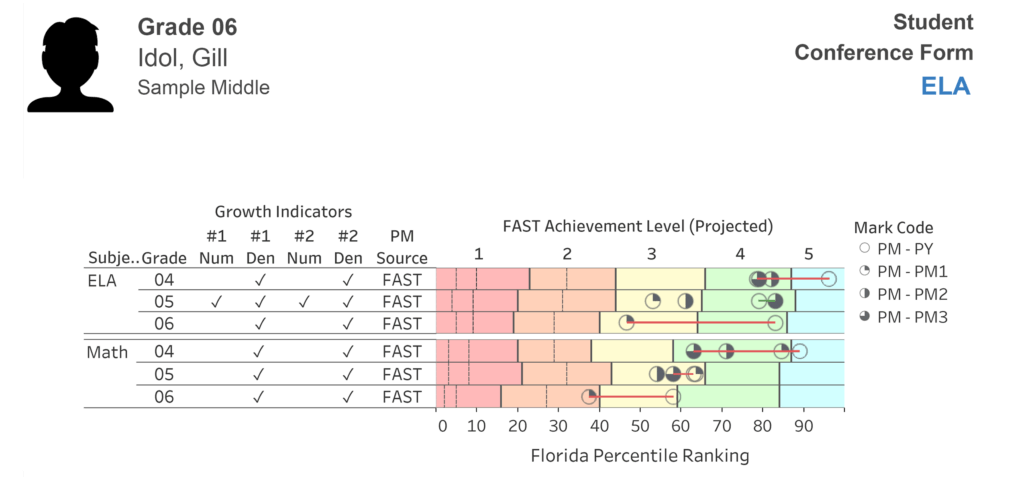Meet Gill, a sixth-grade student who just moved to town.
Gill did not give it his all on FAST PM1 this year. He was nervous about starting middle school and a bit distracted on the day of the test after witnessing a fight on the bus.
What happened next…
When his English teacher, Ms. Jameson, learned his scale score was 220, which she knew to be a Level 2 on the end-of-year cut points, she adjusted her expectations and put him in the Tier 2 intervention group. After all, he didn’t seem to be very engaged in the lessons, so maybe he really was struggling with sixth-grade content.
Gill came to class most of the time and did his work but was bored and often played on his phone. He just wanted to keep his head down and get through it. At the end of the year, lo and behold, he scored a Level 2 on PM3. Everyone nodded and said, “That makes sense.”
How it could have gone…
When his English teacher, Ms. Jameson, learned his scale score was 220, she knew that wasn’t the full picture. She pulled out his conference form (that her principal had shown her how to use) and saw right away that his percentile ranking at PM1 projected him to be at Level 3 by PM3.

Then she also noticed that he dropped about 37 percentile points between the end of fifth grade and the start of sixth! He had achieved Level 5 at the end of third grade and Level 4 in fourth and fifth grade ELA. She saw a similar pattern in math. Now she knew for certain that PM1 was not a good read on Gill’s ability.
Ms. Jameson realized Gill didn’t need Tier 2 interventions; he needed to be inspired…and pushed. She tapped into the love of reading he had when he was younger and helped him renew that relationship with books. She pulled out the Achievement Level Descriptions while planning lessons to ensure she was providing Gill (and others like him) the opportunity to demonstrate Level 4 and 5 mastery. And she encouraged him. By year’s end, he was back in the 83rd percentile, and next year he’s aiming for a Level 5 score.
With better information, we can serve students better.
Embrace the potential of PM1 (and shake off the feeling of panic) by keeping a few key ideas in mind–
- The achievement level in the FAST portal is NOT a projection of end-of-year outcomes. Rather, it is based on a scale score that only tells you how much of the grade-level content the student knows (or may know) at the time of assessment—before they’ve had the benefit of a year’s instruction! Try to resist any temptation to lower expectations for what students can do based solely on the PM1 score.
- If you want to project where a student will likely be after a year of instruction, use the Florida percentile ranking as your guide. For richer context, use multiple prior year instances to get a more accurate read on likely ability. Year-over-year comparisons between Star data and Cambium data are made possible by using the Florida percentile for all grade levels in K12 Lift Student Conference Forms.
- A projection is not a guarantee. Knowing a student’s likely ability is helpful for planning instruction that provides each student the opportunity to learn a year’s material in a year’s time. If we help them grow at a typical pace, they will maintain their percentile ranking and meet the projected achievement level. If we want to see them move to a higher achievement level, we’ll need a plan that accelerates the rate of learning.
Read Next: Are Students Learning…Quickly Enough?
